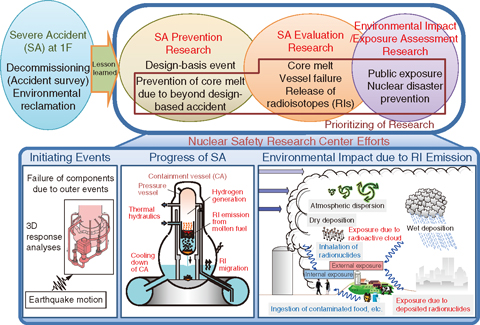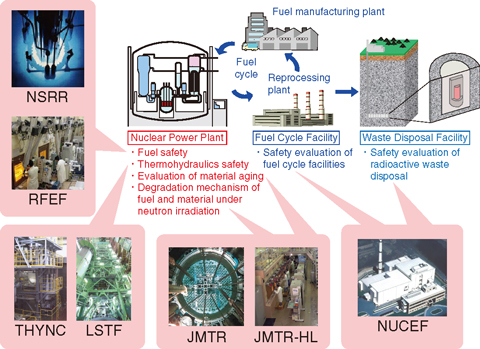
Fig.2-1 Directions of nuclear safety research

Fig.2-2 Nuclear safety research areas and related JAEA facilities
To ensure the safe use of current nuclear facilities, the Nuclear Safety Research Center (NSRC) is studying the possibility of serious accidents at nuclear installations and their consequences. A massive and severe accident (SA) occurred at the Fukushima Daiichi Nuclear Power Station (1F) of Tokyo Electric Power Company, Incorporated as a result of the Great East Japan Earthquake and Tsunami. The NSRC has been collaborating with the Japanese government to institute appropriate emergency response procedures. The specialists at the NSRC regret that they were unable to prevent the accident.
Continuous efforts should be made to avoid serious damage while we utilize nuclear energy. A proper understanding of the situation is important for making the best and safest use of such technologies. In fact, the International Atomic Energy Agency, which investigated the accident at 1F, highlighted the importance of “continuous improvement”. To contribute to “continuous improvement aimed at the highest level of safety”, we have promoted studies on SA prevention and evaluation to reduce the risk of accidents at nuclear facilities and to improve nuclear disaster prevention using analyses such as environmental impact assessments, as shown in Fig.2-1.
We are committed to safety research and have devoted various facilities to this cause, as shown in Fig.2-2. These special facilities allow for the handling of radionuclides and the simulation of accident conditions.
This chapter presents the results of recent research on the following topics: strength evaluation of fuel cladding, which is tested under the simulated conditions of a loss-of-coolant accident, by bend experiments (Topic 2-1); development of an uncertainty analysis method on the source term in SA analyses (Topic 2-2); evaluation of the precautionary action zone using a probabilistic consequence analysis (Topic 2-3); improvement for the estimation of peak power during criticality accidents at nuclear reprocessing plants (Topic 2-4); evaluation of the sorption distribution coefficients of radioactive iodine to rocks using sorption tests (Topic 2-5); and evaluation of radioactivity concentration for site release by the application of the Kriging method (Topic 2-6).
The following topic, solicited by the NSRC and related to the accident at 1F, is described in Chapter 1: Evaluation of Failure at Pressure Vessel Lower-head Based on the Creep Test and the Creep Damage Model (Topic 1-17).